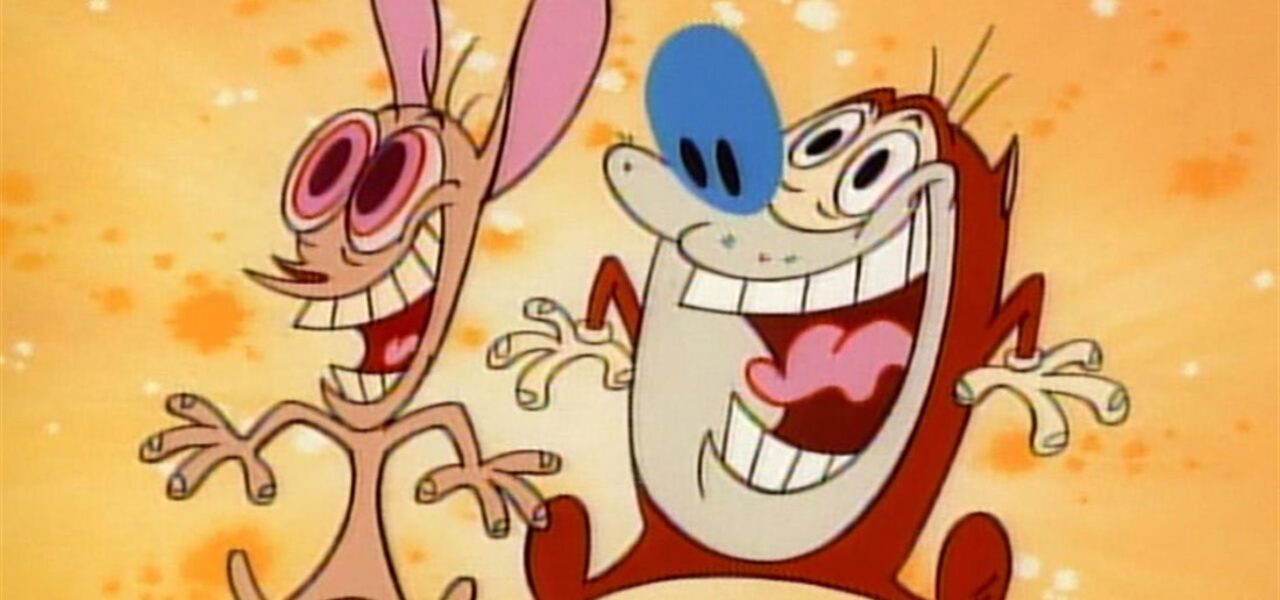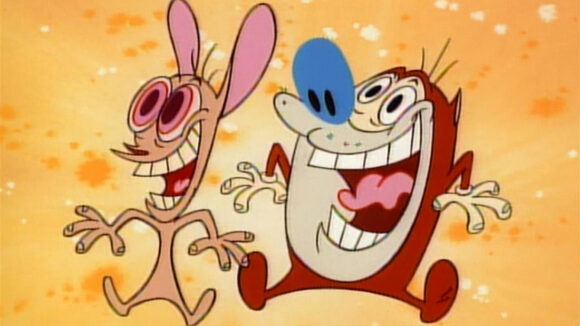

‘The Ren & Stimpy Show’ Reinvented TV Animation And Its Influence Remains 30 Years Later
Animation awoke from a decades-long slumber in the early Nineties. After decades of network-driven and script-driven animated shows, a new crop of series redefined animation for the modern era.
The Simpsons (1989) set a template for primetime adult sitcoms that persists to this day, Batman: The Animated Series (1992) transformed action-adventure series, and MTV Animation merged indie aesthetics and mainstream culture through various series like Liquid Television, Aeon Flux, and Beavis and Butt-Head (1991-1993).
Then there was The Ren & Stimpy Show, which premiered on Nickelodeon thirty years ago: August 11, 1991. This series completely upended children’s tv animation. It didn’t evolve kids’ cartoons; it chewed ’em up, spit ’em out and then made something entirely more entertaining.
Thirty years later, its influence is so deeply embedded within the industry that it’s almost as if animation has always been this way. When the show first came on, it was followed by knock-offs that tried in vain to imitate it, like Hanna Barbera’s 2 Stupid Dogs, Disney’s The Shnookums & Meat Funny Cartoon Show, and Nickelodeon’s own Rocko’s Modern Life. But today, we’re long past the knock-off stage. Multiple generations of artists have followed, and you’ll rarely hear anyone say nowadays that they’re referencing R&S. And yet, the DNA of R&S has passed through the industry over the last three decades and much of animation today unconsciously references creative and production choices that would have been unthinkable pre-R&S.
When an artist today talks about going off-model, it’s just a given that you can go off-model on a production. That wasn’t always an option though. In pre-R&S tv animation, you followed model sheets and the expressions and poses on those sheets were what you had, no more, no less.
When we talk about a board-driven versus a script-driven show, it sounds so obvious, but there was no such thing as a board-driven show in Seventies and Eighties tv animation. Artists can write? You’d be hauled off to a psych ward for even suggesting something like that in the Eighties. These were Golden Age animation ideas that had long been abandoned, before being resurrected in the late-Eighties and most succinctly expressed in R&S.
Many artists working in the industry right now weren’t even born when the show was made so it’s difficult to imagine a time when tv animation was created differently. But before R&S, tv series were created in smoky network boardrooms while bored suits nursed martinis and planned after-hour trysts. Writers developed and wrote entire shows before the majority of artists even knew what the damn thing was about. The role of the artist happened deep into the creative process; their role was to add some perfunctory visuals so that kids wouldn’t stare at an empty screen.
The legacy of R&S is both the show itself and something far greater. The show set a new standard for tv animation. It proved something that had long been forgotten: entertainment animation can be an art form and it can be created with dignity and craftsmanship.
Most importantly, it could not be created using the ways of the past. Thus, the tumultuous history of the series is a given. A new approach like this could not exist for long. First, it was impractical from a production perspective. Second, at its core, it was antithetical to how non-creative people think about animation, which is not as entertainment but as a product.
But before everything bad happened and the dream fell apart, there was a brief period of glory where artists finally saw what was possible. Those who followed in the years immediately afterward and became superstars did so with R&S as their north star. Many succeeded in creating shows as memorable and iconic as R&S including Genndy Tartakovsky, Craig McCracken, and Stephen Hillenburg, and they often did so with the input of artists who had worked on the original Nickelodeon series. The late Hillenburg even managed to surpass R&S in popularity with SpongeBob SquarePants, which has remained the number one rated kids’ series on cable for the last twenty years.
Sadly, many of the specific production ideas innovated in R&S were too good to last. The short-lived idea that comedic series animation should have a layout phase is, for the most part, gone. Studio number crunchers decided they could skip that step if they simply overworked the board artists, a solution in which both the artists and the end product suffer. These are the kind of innovations that slip away over time when everyone just accepts things as the way they are and doesn’t challenge convention. It’s also why R&S remains memorable. Its brilliance was not just what appeared onscreen, but its one-of-a-kind pipeline that emphasized quality every step of the way.
What remains of Ren & Stimpy’s infuence, however, is still great. A commitment to craft and the notion that artists should be in charge are still potent ideas that resonate across the industry, and there are many showrunners today who are fighting to keep these ideals alive in hostile corporate environments. While R&S itself continues to recede further and further into the past, its legacy as a launching pad for a more creative animation industry continues to pay dividends.

.png)